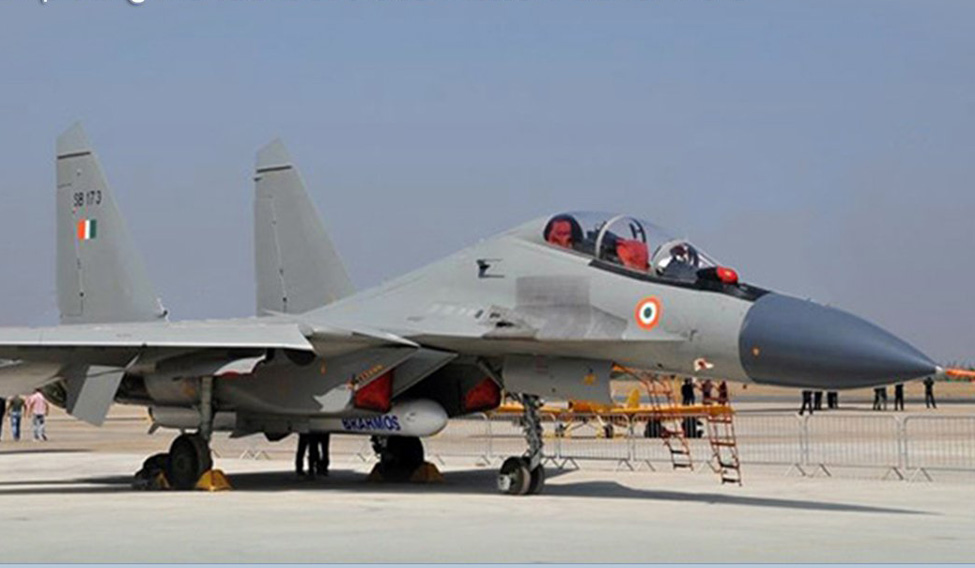India joined a select global club of nations with advanced weaponry when the Indian Air Force (IAF) successfully carried out a launch of the 2.5 ton BrahMos cruise missile from a fighter aircraft, the Sukhoi 30 MKI, on Wednesday. The supersonic missile, with a range of 400 km and a speed of Mach 2.8, is reported to have acquired the target, a ship in the Bay of Bengal, with the required accuracy.
This demonstration of the BrahMos in its air-launched avatar makes the missile multi-platform and three-dimensional, in that it can now be launched from land, sea and air and offers a range of platform options to the Indian military, depending on the operational exigency. The DRDO, which has been steering India’s overall integrated missile development programme since the mid 1980s, and the IAF are to be commended for this achievement—that of enabling India with an air-launched cruise missile (ALCM) of the supersonic category. The BrahMos flies at 2.8 times the speed of sound, hence it is supersonic; whereas the earlier generation of cruise missiles were subsonic or flew below the speed of sound (1,235 kmph).
Cruise missiles have been part of the inventory of the major powers during the Cold War and their most distinctive feature is that they ‘cruise’ in a horizontal flight path, which is often terrain hugging and acquire the target with advanced guidance features that allow for the highest degree of accuracy—in metres by way of circular error probability (CEP). In the US-led war for Kuwait in January 1991, the Tomahawk missiles were used in a lethal manner.
While cruise missiles in the Cold War could be fitted with a nuclear warhead—for instance, the nuclear-tipped Tomahawk that the US Navy fitted on submarines (hence known as submarine-launched cruise missile [SLCM]) as part of deterrence capabilities—both the US and the former USSR decided not to invest in nuclear cruise missile capability. The conclusion that had been arrived at after rigorous operational analysis was that the existing index of deterrence stability was degraded with the introduction of the relatively short-range cruise missile and its inherent detection-evading characteristics. By extension, though both sides had the technological capability to do so, they did not invest further in supersonic cruise missiles, much less the nuclear-tipped variants.
MaidenTest Flight : The World’s fastest Supersonic Cruise Missile #Brahmos created history after it was successfully flight-tested from the #IAF frontline Fighter Aircraft Sukhoi-30MKI against a sea based target in the Bay of Bengal, 22 Nov 17.@DefenceMinIndia @SpokespersonMoD pic.twitter.com/doOsvqznGC
— Indian Air Force (@IAF_MCC) November 22, 2017
How does the addition of the ALCM add to India’s overall military capability and is this a ‘triad’ in terms of nuclear deterrence? The BrahMos ALCM definitely enhances India’s overall trans-border ordnance delivery or strike capability and the Wednesday test is illustrative of this. The Sukhoi operates at heights of 3,000 metres and more and would have launched the BrahMos about 400 km away from the designated target. The fact that the target was acquired in under seven minutes from that altitude gives one an idea about the potency of this capability. With a conventional warhead and this level of accuracy, it can be used in a number of operational exigencies where a single high-value target is to be neutralised.
Currently, the IAF is among the very few air forces in the world to have demonstrated this kind of ALCM capability in the supersonic range and this has its tactical advantages. However the word ‘triad’ may be misleading, for the former is used in the traditional nuclear deterrence calculus and, as of now, there is no evidence to suggest that India will invest in the cruise missile for deterrence purposes. The Cold War experience had revealed the inherent destabilising nature of the cruise missile and this needs to be internalised not just by India but Pakistan and China, the other regional powers with weapons of mass destruction.
The DRDO, which has been subjected to considerable adverse comment for not being able to deliver on what it has often promised to the Indian military has reason to be proud of this success. The integration of a heavy 2.5 ton missile onto a fighter aircraft is a major technological challenge and the cooperation with Russia has paid rich dividends. Moscow’s valuable help in this domain must be acknowledged. But the penchant to overstate the ‘strike’ capability of the BrahMos in its ALCM mode would be imprudent.
Speak softly when you acquire a lethal missile is sage counsel.





